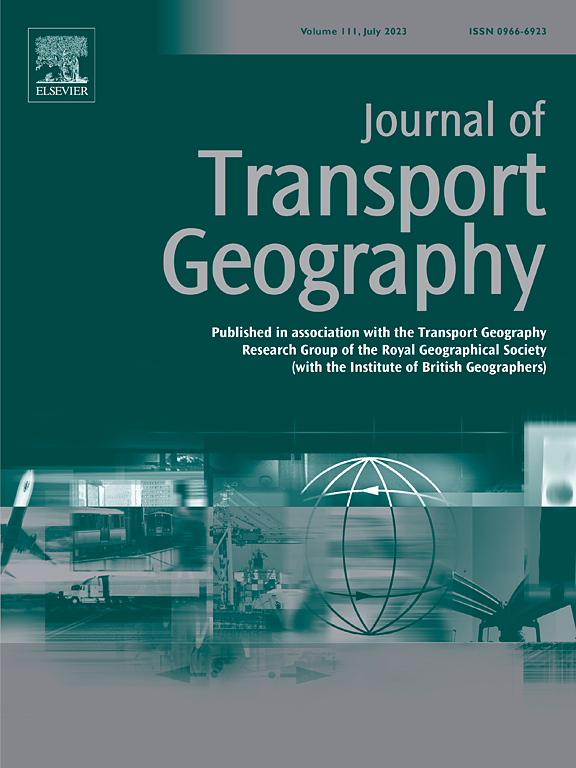城市骑行环境中电动自行车类型对路线偏好的影响分析:基于GPS数据驱动的方法
IF 6.3
2区 工程技术
Q1 ECONOMICS
引用次数: 0
摘要
与汽车保有量相比,在欧洲城市,电动自行车的普及率有显著增长的趋势。这就要求城市重新考虑其交通和基础设施战略,以更好地满足所有骑自行车者的多样化需求。本文的重点是都柏林,在那里,自行车图书馆(即基于社区的自行车借阅计划)报告了超过8400次旅行,使用不同类型的电动自行车:折叠,货运和标准,在六个月内。其目的是通过分析骑行者如何与自行车道、隔离自行车道和公交道等基础设施相互作用来检查路线偏好,这些基础设施可能受到旅行距离、行程持续时间和海拔差异等因素的影响。基于电动自行车类型,对收集的GPS数据使用统计t检验来衡量自行车基础设施使用的变化。进一步研究了每个骑行者的路线特征,以找到实际路线的最短替代方案。观察到的行程和最短替代行程的特征组合适合逻辑回归和随机森林模型,形成一个二元分类任务:决定一个行程是否有利。这些模型帮助我们了解骑行者需要什么样的功能,而代价是增加行程的距离。它还显示了不理想的功能,如共享使用车道和地面改变车道。由此产生的模型能够在未知数据上预测路线选择的准确率高达65%,同时还能突出显示路线选择中最重要的特征。有趣的是,电动自行车的类型是选择路线时最重要的特征。这些发现可以帮助城市规划者在都柏林创建更多的自行车友好路线,并增加城市中骑自行车的兴趣。本文章由计算机程序翻译,如有差异,请以英文原文为准。
Analysing the influence of electric bike types on route preferences in urban cycling environments: A GPS data-driven approach
There is a notable trend towards an increase in e-bike adoption as compared to car ownership in urban European cities. This calls for cities to rethink their transportation and infrastructure strategies to better accommodate the diverse needs of all cyclists. This paper focuses on Dublin, where the Bike Library (i.e., a community-based bike-borrowing scheme) reported over 8400 trips, using different types of e-bikes: folding, cargo, and standard, over six months. The objective is to examine route preferences by analysing how cyclists interact with infrastructure such as cycle lanes, segregated cycle lanes, and bus lanes, which could be influenced by factors like travel distance, trip duration, and elevation differences. Variations in bike infrastructure usage were measured using statistical t-tests on the collected GPS data based on e-bike type. The route features of trips taken by each cyclist were further examined to find the shortest alternatives to the actual route. The combination of features of the observed trips and shortest alternative trips were fit to logistic regression and random forest models forming a binary classification task: deciding whether a trip is favourable or not. These models help us understand what features are desirable to a cyclist at the cost of added distance in their trip. It also shows features that are not desirable such as shared use lanes and surface change lanes. The resulting models were able to predict route choice accurately up to 65 % on unseen data while also highlighting the most important features in making route choices. Interestingly, the type of e-bike is the most important feature in making a route choice. These findings can help urban planners to create more cyclist-friendly routes in Dublin and increase cycling interest in the city.
求助全文
通过发布文献求助,成功后即可免费获取论文全文。
去求助
来源期刊

Journal of Transport Geography
Multiple-
CiteScore
11.50
自引率
11.50%
发文量
197
期刊介绍:
A major resurgence has occurred in transport geography in the wake of political and policy changes, huge transport infrastructure projects and responses to urban traffic congestion. The Journal of Transport Geography provides a central focus for developments in this rapidly expanding sub-discipline.
 求助内容:
求助内容: 应助结果提醒方式:
应助结果提醒方式:


